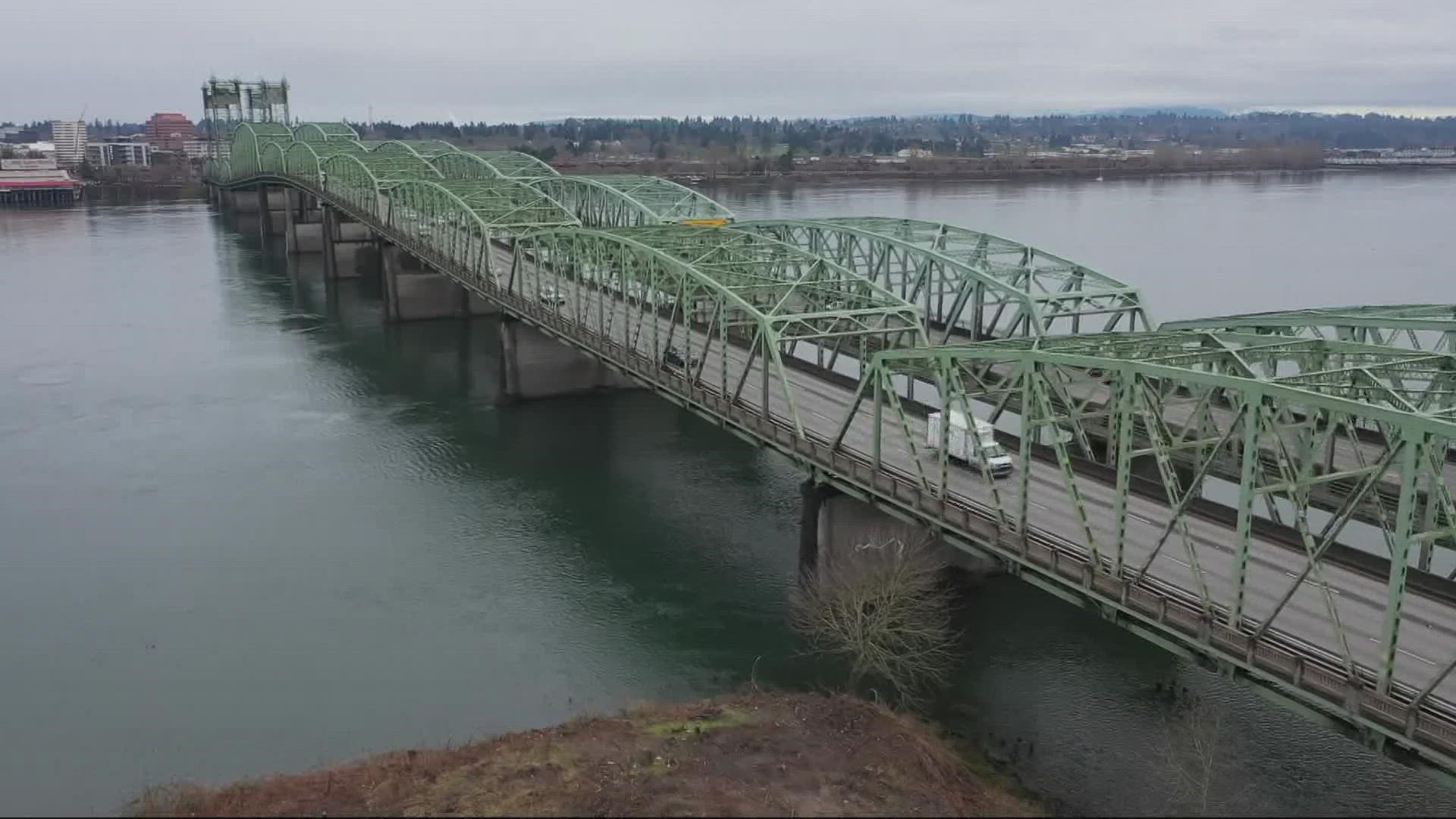PORTLAND, Ore. — It's a long haul ahead, but the Interstate Bridge Replacement (IBR) Program, now in year two, is moving forward with "the pedal to metal, without taking any shortcuts," according to Program Administrator Greg Johnson, who joined the team about a year ago.
The century-old Interstate Bridge, built on wooden piers, now carries 143,000 cars and $71M of commerce a day. It’s been deemed “doomed to fail” when a major Cascadia Subduction Zone Earthquake strikes. There are day-to-day impacts too, including bridge lifts that stop everyone for 20 minutes at a time and rush hour backups that choke traffic for miles.
"Doing nothing is just unacceptable for this area," Johnson said, noting that both the Oregon and Washington state governments are on board with the preliminary planning and next steps to find a solution to one of the nation's worst bottlenecks.
"We've done surveys, we've talked to people and, you know, most folks recognize this thing has been talked about for almost a quarter of a century and nothing has happened," he said.
It's been nearly a decade since the original Columbia River Crossing project sank, and Johnson said there is broad now support for renewed action. At the heart of the decision-making process this time: equity, and climate change.
Two dozen community members serve in the program's Equity Advisory Group, weighing in on topics like program impacts on the local community and accessibility for every bridge user.
The program also assigned a principal climate officer to focus on planning for things like sea level rise, reducing carbon emissions, incorporating efficient mass transit and utilizing greener building methods during construction.
"We are going to have specifications that require contractors to have cleaner equipment…by the time we get started, we think that there will be room to say a certain percentage of your fleet, Mr. Contractor, has to be a cleaner energy source rather than fossil fuels," Johnson said.
By the conclusion of the spring community engagement period, the IBR program had communicated with more than 10,000 community members and had received more than 15,000 written comments.
A series of online open houses throughout November will give the public another chance to ask questions and see the planning progress. An online survey will go live later next week.
Amidst the volumes of feedback, Johnson said he's committed to seeing the project through.
"We have to thread the needle and make sure that we don't let perfect a perfect solution be the enemy of a very good solution," he said.

